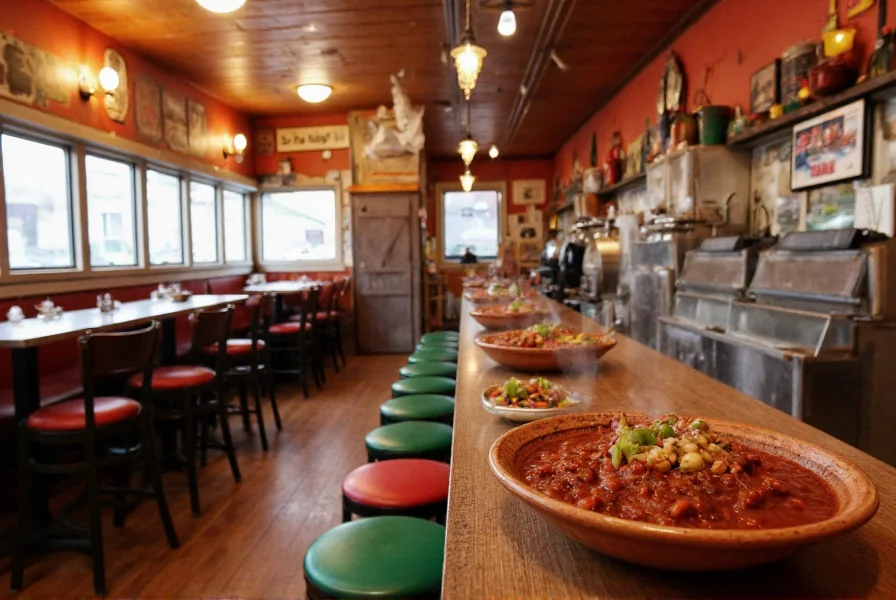Chili parlors represent a unique American culinary tradition that emerged in the late 19th century, evolving from humble street food stands to dedicated dining establishments. These specialized restaurants have preserved regional chili-making techniques while adapting to contemporary dining expectations. Understanding what defines a genuine chili parlor helps enthusiasts identify authentic experiences beyond generic restaurant offerings.
The Historical Roots of American Chili Parlors
The first documented chili parlors appeared in San Antonio, Texas around the 1880s, established by Mexican immigrants who sold chile con carne from street carts known as chili stands. By the early 20th century, these evolved into indoor establishments catering to working-class patrons, particularly railroad workers and laborers seeking affordable, hearty meals. The 1930s saw chili parlors proliferate during the Great Depression due to their economical preparation using inexpensive ingredients.
During World War II, chili's popularity spread nationally as soldiers from different regions encountered regional variations. Post-war, chili parlors became fixtures in American urban landscapes, with chains like Skyline Chili (founded 1949) and local institutions establishing distinct regional identities. Despite the rise of fast food, dedicated chili parlors have maintained their cultural significance through authentic preparation methods and community connections.
Regional Variations Across American Chili Culture
What distinguishes a true chili parlor is its adherence to regional preparation styles, each with specific ingredient requirements and serving traditions. These variations reflect America's diverse culinary landscape and immigration patterns.
| Regional Style | Key Characteristics | Signature Serving Method | Notable Locations |
|---|---|---|---|
| Texas Red | Meat-only (no beans), coarse-ground chili peppers, cumin-heavy | Bowl with oyster crackers, onions, cheese | Franklin, Austin, San Antonio |
| Cincinnati | Tomato-based, Mediterranean spices (cinnamon, cloves), served over spaghetti | "Three-way" (chili/spaghetti/cheese) | Skyline, Gold Star locations |
| New Mexico | Fresh roasted green or red chilies, minimal spices, often with pork | With tortillas, rice, beans | Albuquerque, Santa Fe |
| Midwest | Bean-inclusive, tomato-based, milder heat profile | Over hot dogs ("coneys"), with mustard | Detroit, Chicago |
Identifying an Authentic Chili Parlor Experience
Not all restaurants serving chili qualify as genuine chili parlors. Authentic establishments demonstrate specific characteristics that distinguish them from general diners or fast-food chains offering chili as just one menu item. When evaluating regional chili parlor styles, look for these markers of authenticity:
- Specialized menu focus - Chili should represent at least 50% of the core menu items, with multiple preparation options
- House-made chili base - Avoid establishments using pre-made mixes; authentic parlors prepare their chili base daily
- Regional adherence - True Texas parlors won't serve beans, while Cincinnati establishments maintain specific spice blends
- Traditional serving vessels - Many authentic parlors use specific bowls or plates associated with their regional style
- Community integration - Long-standing local chili parlors often feature customer photos, historical memorabilia, and regular patron traditions
Understanding what to expect at a chili parlor helps set appropriate expectations. Most authentic establishments maintain simple decor focused on functionality rather than ambiance, with counter service being common. Menu innovation typically occurs within traditional parameters rather than radical reinterpretations of regional styles.

The Cultural Significance of Chili Parlors
Beyond serving food, chili parlors function as community anchors with cultural importance disproportionate to their modest appearances. These establishments preserve regional foodways while adapting to contemporary dining expectations. Many have survived economic downturns and changing food trends by maintaining consistent quality and community connections.
Chili parlors often serve as informal community centers where regulars develop relationships with staff and fellow patrons. In regions like Cincinnati, chili parlors have become synonymous with local identity, with family recipes passed through generations. The persistence of these establishments demonstrates the enduring appeal of simple, well-executed regional cuisine in an era of culinary homogenization.
As food tourism grows, discerning travelers increasingly seek authentic chili parlor experiences rather than chain restaurant alternatives. This trend has helped preserve traditional preparation methods while introducing regional styles to new audiences. The best chili parlors balance tradition with subtle innovations that respect their culinary heritage.
Frequently Asked Questions
What's the difference between a chili parlor and a regular restaurant serving chili?
A true chili parlor specializes primarily in chili con carne, with the dish representing at least half of their core menu. Regular restaurants might offer chili as one option among many, often using pre-made mixes. Authentic chili parlors typically focus on regional preparation styles, maintain house-made recipes, and often feature decor and service styles connected to their regional tradition.
Does authentic Texas chili really contain no beans?
Yes, traditional Texas-style chili (often called "Texas Red") contains only meat, chili peppers, and spices—no beans, tomatoes, or other fillers. The Texas Chili Parlor Association maintains that beans constitute a "cardinal sin" in authentic preparation. While some modern establishments offer bean-inclusive options for customer preference, purists consider bean-free preparation essential to the style.
How can I identify a quality chili parlor when traveling?
Look for establishments with long operating histories in the community, menus focused primarily on chili preparations, and evidence of house-made preparation (like visible kitchen areas or staff discussing cooking methods). Local newspaper features, community awards, and consistent customer traffic during off-peak hours often indicate quality. Avoid places where chili appears as just one option among dozens of unrelated dishes.
Why do Cincinnati chili parlors serve their chili over spaghetti?
This distinctive preparation reflects Cincinnati's early 20th century Greek and Macedonian immigrant influence. These immigrants adapted their Mediterranean spice traditions to local ingredients, creating a unique chili style they served over spaghetti (a familiar starch) rather than the traditional cornbread or tortillas. The "three-way" (chili/spaghetti/cheese) became the signature presentation that distinguishes Cincinnati-style from other regional variations.










 浙公网安备
33010002000092号
浙公网安备
33010002000092号 浙B2-20120091-4
浙B2-20120091-4